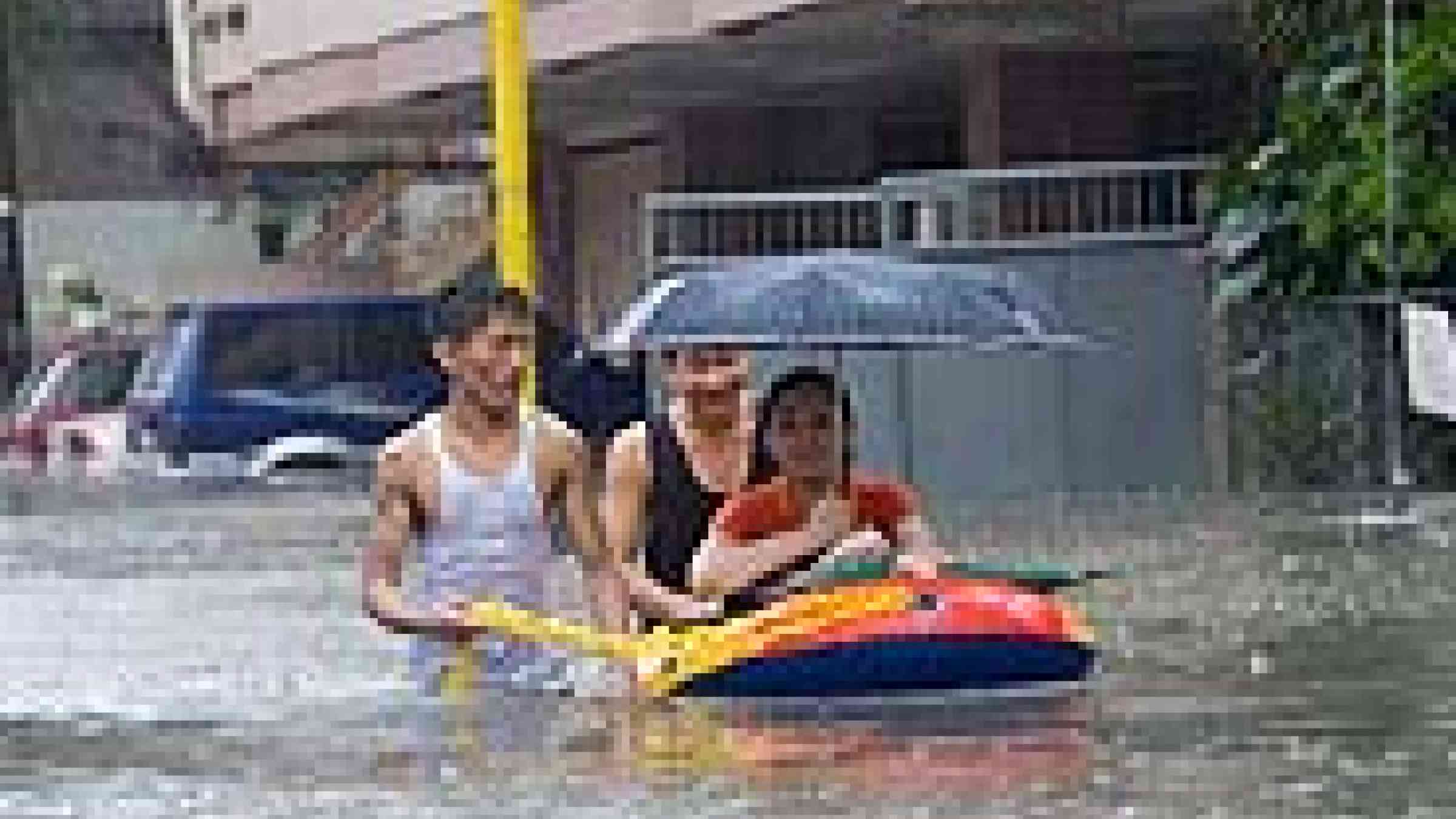Tsunami alerts show how vulnerable hundreds of millions in Asia-Pacific are to range of 'natural' disasters

Bangkok - Today's massive quakes off the coasts of the Philippines and the Solomon Islands - coming on the back of a string of typhoons, floods, earthquakes and tsunamis - have shown how hundreds of millions of people living in the Asia-Pacific are at risk from major catastrophes.
The latest quakes measuring 7.8 and 7.3 struck this morning (Oct 8) between Vanuatu and the Solomon Islands and led to a tsunami warning for the entire South-West Pacific - later withdrawn - while a 6.7 quake struck off the coast of the Philippines. Neither caused damage.
Eight countries within the Asia-Pacific region have suffered a range of major disaster impacts within the last 11 days (see fact box below). Many countries also sit on the 'Ring of Fire' making them prone not just to earthquakes but also to volcanic eruptions.
"What these disasters show us is how ill prepared the Asia-Pacific region is to disasters. Buildings are not quake proof. Early warning systems need to be strengthened. Disaster response mechanisms cannot cope with the thousands who need aid when crises strike and the risks are increasing thanks to growing urbanisation and the impacts of climate change," said Geoff Shepherd, World Vision's director for Humanitarian and Emergency Affairs for the Asia-Pacific.
For example, Metro Manila (population 11.5 million) - still reeling from Typhoon Ketsana -is at great risk from a major earthquake as it sits on a fault line. An estimated 40 percent of total buildings would be damaged, more than 33,000 people killed and 147,000 injured by a major quake.1 It is not a question of if, but when.
World Vision's own Planet Prepare Report (www.wvasiapacific.org/climatechange) which looks at the vulnerability of coastal communities in the Asia-Pacific states that 75% of the 634 million people living less than 10 metres above sea level and near the coast, live in Asia. These low elevation zones also have higher rates of urbanisation than the rest of the world.
Shepherd said: "Countries are well aware of the risks and yet people are actually migrating into cities and into danger. Jakarta, Manila, Yangon, the economic belt of coastal China, these are all highly vulnerable to typhoons, flooding and in many cases quakes. Migration into cities to escape poverty is a good thing but only if there is proper zoning, proper preparedness planning and decent protective infrastructure. Governments need to get more serious, more quickly about protecting their people."
In addition, poor people living in rural and coastal communities are also ill prepared to deal with changing climate patterns that would destroy crops, and livelihoods - perhaps for good - creating greater vulnerabilities and increasing their dependency on government.
World Vision is one of the agencies attending the talks on climate change at the UN in Bangkok and has been pushing for stronger mitigation and adaptation measures to be adopted.
Dr. Brett Parris, Director of Climate Policy for WV International, said: "We urgently need wealthy countries to significantly lift their level of ambition on emission reduction targets and adaptation financing for developing countries. At-risk nations need to get even more serious about protecting their populations and including disaster risk reduction in their national adaptation plans."
Meanwhile, Gerard Van Gramberg, Humanitarian and Emergency Affairs manager, who overseas World Vision's disaster response work in the Pacific Islands, said people there were now more aware of the risk of tsunamis following the Samoa disasters.
"Islanders take earthquakes and tsunamis seriously but there is a general lack of preparedness and little understanding of the signs of one," he said. More work was needed to educate and prepare people - work that World Vision was doing - but that needed more funding.
Disaster timeline:
Sun 27 September: Typhoon Ketsana devastates Manila, Philippines
Tues, 29 September: Ketsana hits Vietnam resulting in widespread flooding
Tues, 29 September: Tsunami hits Samoa and American Samoa
Wed, 30 September: Remnant of Ketsana hits Laos and Cambodia
Wed, 30 September: 7.6 quake hits Sumatra
Thurs, 1 October: Second 6.8 quake hits Indonesia
Thurs, 1 October: Heavy rains and flooding in Southern India
Sat, 3 October: Typhoon Parma hits northern Philippines
Thurs, 8 October: Quakes strike between Solomon Islands and Vanuatu and off the coast of the Philippines
Footnotes:
1. Earthquake impact mitigation in poor urban areas: The case of Metropolitan Manila, Author(s): Kanako Iuchi, Ann-Margaret Esnard, Journal: Disaster Prevention and Management, 2008, Volume: 17 Issue: 4 Page: 454-469
World Vision Contacts:
Brett Parris, Director of Climate Policy for WV International
Cell: +61 403 866 244 or +61 424420283
Laurence Gray, Advocacy Advisor for Asia-Pacific
Cell: +66 818452807
Geoff Shepherd, Director Humanitarian and Emergency Affairs, Asia-Pacific region
Cell: +65 97251615
Gerard Van Gramberg, Humanitarian and Emergency Affairs manager, World Vision Pacific Development Group
Cell: +675 71171938